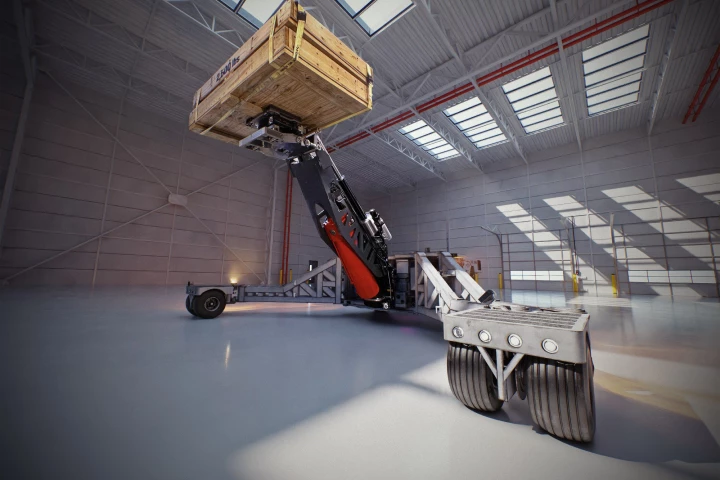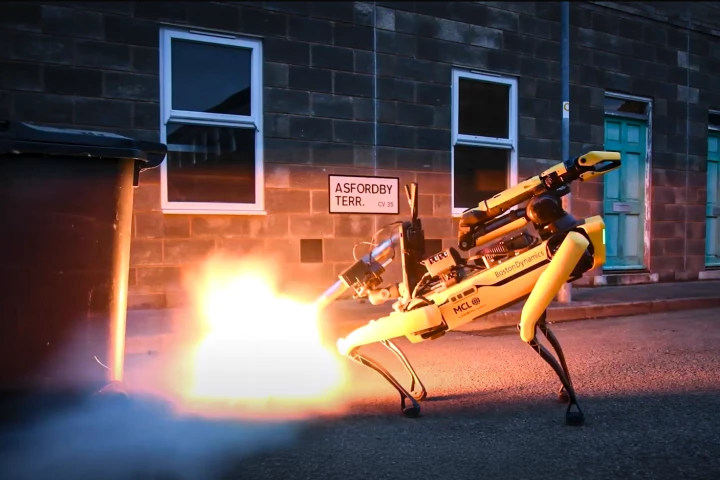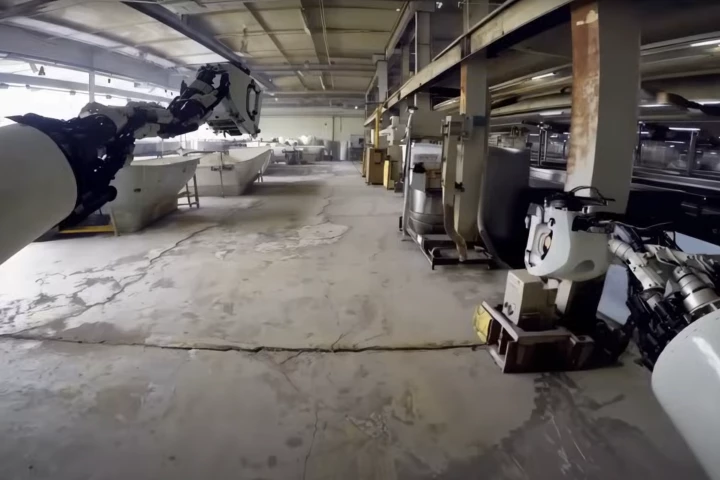Robotics
-
You'll never have to carry clubs around the course again, with this AI-powered vision-equipped caddie that recognizes you and moves by hand command. One model will even assess your swing in real time. Right now, the caddies are discounted by 40%.
-
Ultra-deep tech startup Nirvanic put on a fairly humble-looking robotics demo at Jeff Bezos's private MARS 2025 conference – but it may go down as a landmark moment both in AI robotics, and in our understanding of consciousness itself.
-
Autonomous warships have moved into the large fast-attack league as Eureka Naval Craft announces what it describes as the most advanced autonomous naval attack vessel in the world. It can carry 40 tonnes and reach speeds of up to 50 knots.
-
Factory wood-cutting robots may be capable of fast and intricate carpentry tasks, but they're expensive – plus they put actual carpenters out of work. A new augmented reality system splits the difference, by guiding the hands of human carpenters.
-
Rise Robotics is looking to make a Guinness World Record that has remained unbroken for nearly a decade by using a unique belt-driven linkage system.
-
Chinese robotics company Zhongqing Robotics (aka EngineAI) just front-flipped into the humanoid robotics scene. The firm has posted a video of what is claimed to be the world's first humanoid robot front flip.
-
1X has just dropped a video of its new at-home robot helper, the Neo Gamma. It can clean, serve, and act as a voice companion. Never has a humanoid robot looked so huggable. Or in such need of a hug.
-
What looks like an armored scout car complete with a 30-mm gun but no crew? It's Milrem Robotics' latest HAVOC 8x8 advanced hybrid-electric Robotic Combat Vehicle (RCV) just unveiled at IDEX 2025 in Abu Dhabi, United Arab Emirates.
-
We're used to seeing robot dogs doing all sorts of weird things, but how about something to make the world safer? The British Ministry of Defence's answer is using the mechanical mutts to make detecting and defusing bombs safer and more efficient.
-
What's good for fish may be good for robots, too, as researchers from the Helmholtz-Zentrum Hereon have developed an artificial gill that can extract oxygen from seawater to run fuel cells to power robotic sea gliders on long missions.
-
As science wrestles with the thorny job of proving, defining and understanding human consciousness, one pioneering startup aims to apply cutting-edge theories of consciousness to AI models – and create the first sentient AI. This is wild stuff.
-
The AI behavior models controlling how robots interact with the physical world haven't been advancing at the crazy pace that GPT-style language models have – but new multiverse 'world simulators' from Nvidia and Google could change that rapidly.
Load More











